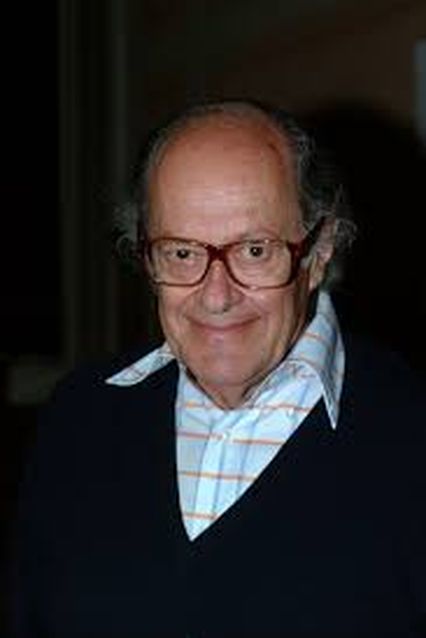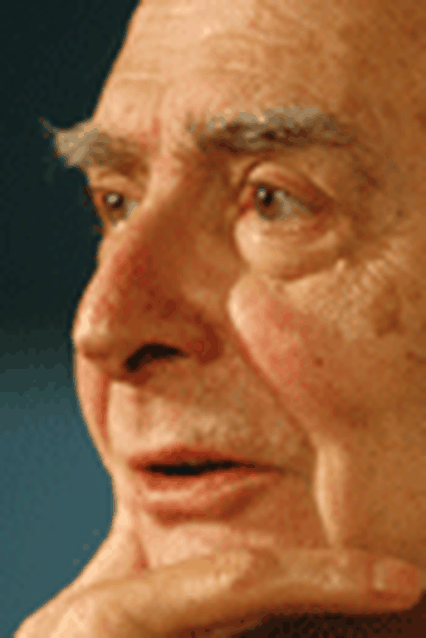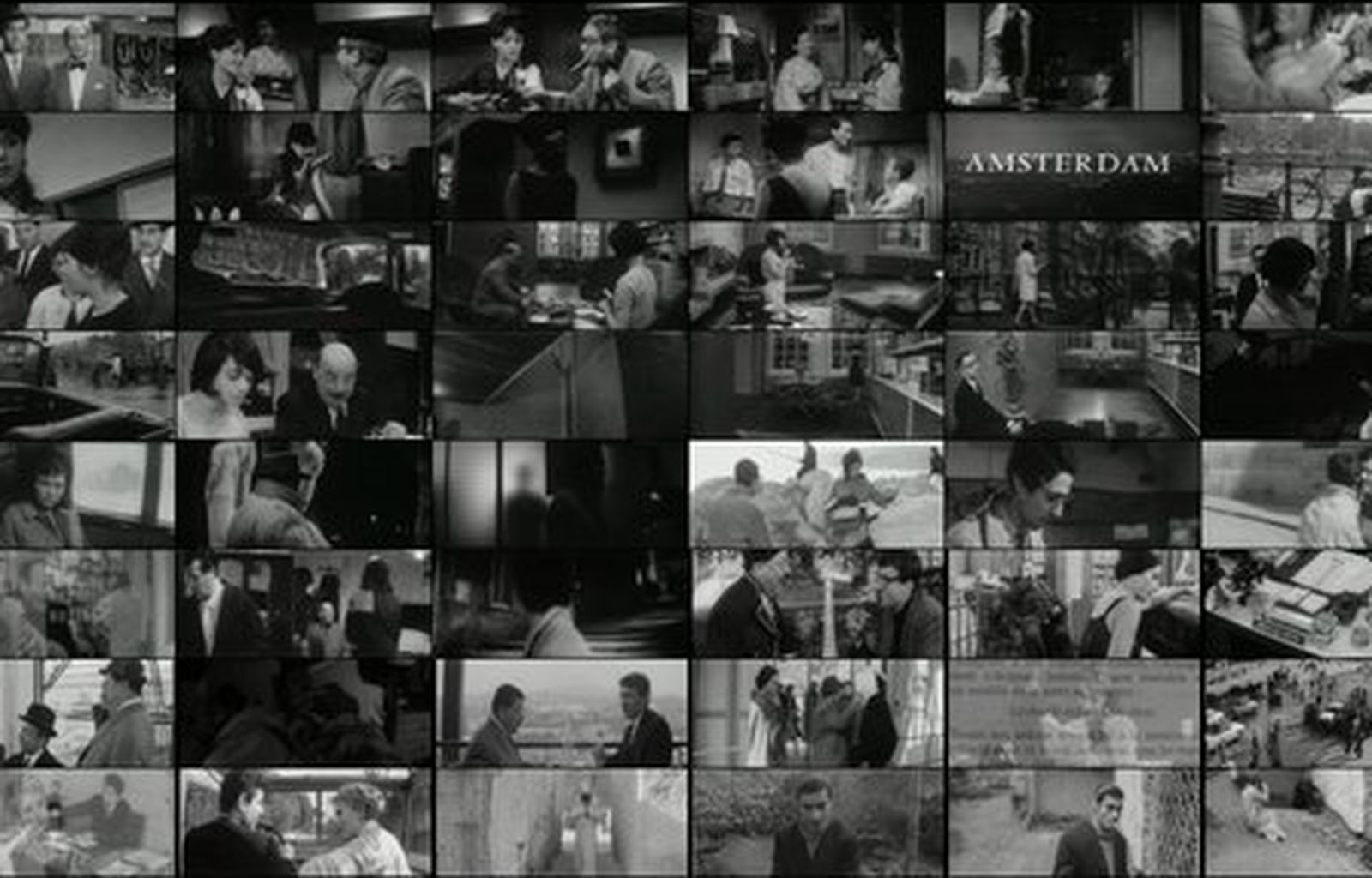2° FESTIVAL INTERNAZIONALE CINEMA GIOVANI
Retrospettiva - Nouvelle Vague
L'homme qui vendit la tour Eiffel in Les plus belles escroqueries du monde
by Claude Chabrol
Biography
film director
Roman Polanski
FILMOGRAFIA
filmografia essenziale/essential filmography
Nózw wodzie (Il coltello nell’acqua, 1962), Repulsion (Repulsione, 1965), Cul-de-sac (id., 1966), The Fearless Vampire Killers (Per favore… non mordermi sul collo, 1967), Rosemary’s Baby (Rosemary’s Baby - Nastro rosso a New York, 1968), Macbeth (id., 1971), Chinatown (id., 1974), Le Locataire (L’inquilino del terzo piano, 1976), Tess (id., 1979), Bitter Moon (Luna di fiele, 1992), Death and the Maiden (La morte e la fanciulla, 1994), The Pianist (Il pianista, 2002), J’accuse (L’ufficiale e la spia, 2019).
Roman Polanski
Moved to Poland in 1937. After the nazist invasion he was forced with his family into the Krakow ghetto. His mother was deported to Auschwitz and killed, while his father survived the concentration camp of Mauthausen Gusen. He graduated at the Polish Film School of Cinematography of Łódź in 1959. During his studies he shot several short films, among them Two Men and a Wardrob, which was awarded at many international festivals. In 1962 he presented his first feature film, Knife in the Water.
Despite the Polish authorities’ critics, the film was acclaimed by the audience and earned Polanski his first nomination to the Academy Award and the Critics’ Award at the Venice Film Festival. He moved to London in 1963, where he wrote and directed three films with Gérard Brach: Repulsion (1965), whose main character was Catherine Deneuve, Cul-de-sac (1966), which gained the Golden Bear at the Berlin Film Festival and The Fearless Vampire Killers (1967), produced by MGM, starring his future wife Sharon Tate. In 1968 he moved to the USA, where he shot Rosemary’s
Baby, a horror film set in New York starring John Cassavetes and Mia Farrow. In the August of 1969 Sharon Tate was brutally murdered by members of Charles Manson’s “family”. In 1971 Polanski moved back to London to direct a film adaptation of Macbeth (1971), his first work after his wife’s death. After What?(1972), shot in Italy and played by Marcello Mastroianni, he returned to Hollywood to direct Chinatown (1974) for Paramount Pictures, his tribute to the American classics of noir genre,
starring Jack Nicholson as main actor. In the same year he debuted as theatre director at the Spoleto Festival with Alban Berg’s Lulu. He was the main character in his next film The Tenant (1976), based on a Roland Topor’s novel, with Sven Nykvist as cinematographer. He played the role of a shy Polis immigrant obsessed by suicide instinct. Embroiled in a sexual scandal and convicted by the American Court, he is forced to leave the USA in 1978 and settles in France, where he shot Tess (1979). Then he directed Pirates (1986) and Frantic (1987) with Harrison Ford and his future wife Emmanuelle Seigner, who also played in Bitter Moon (1992) and The Ninth Gate (1999). In 1994 Polanski was the main character with Gérard Depardieu in A Pure Formality by Tornatore and he directed Death and the Maiden. In 2002 he was awarded the Golden Palm at Cannes and an Oscar for Best Director with the film The Pianist. Two years later he directed Oliver Twist, based on Dickens’ novel.
FILMOGRAFIA
Morderstwo (cm, 1956), Uśmiech zębiczny (cm, 1956), Rozbijemy zabawę (cm, 1957), Dwaj ludzie z szafą (cm, 1958), Lampa (cm, 1959), Gdy Spadają anioły (cm, 1959), Le Gros et le maigre (cm, 1960), Ssaki (cm, 1962), Nóż w wodzie (Il coltello nell’acqua, 1962), Les Plus belles escrocqueries du monde (ep. La rivière de diamants; Le più belle truffe del mondo, ep. La collana didiamanti, mm, 1964), Repulsion (Repulsione, 1965), Cul-de-sac (Cul de sac, 1966), The Fearless Vampire Killers (Per favore non mordermi sul collo, 1967), Rosemary’s Baby (Rosemary’s Baby - Nastro rosso a New York, 1968), Macbeth (id., 1971), What? (Che?, 1972) Chinatown (id., 1974), Le Locataire (L’inquilino del terzo piano, 1976),
Tess (id., 1979), Pirates (Pirati, 1986), Frantic (id., 1988), Bitter Moon (Luna di fiele, 1992), Death and the Maiden (La morte e la fanciulla, 1994), Gli angeli (videoclip, 1996), The Ninth Gate (La nona porta, 1999), The Pianist (Il pianista, 2002), Oliver Twist (id., 2005), Chacun son cinéma (ep. Cinéma érotique, cm, 2007).
SPOT PUBBLICITARI/COMMERCIALS
Marie Claire (1981), Chanel Antaeus (1982), Kronenburg (1982), Peugeot 309 (1986), Vanity Fair, Compratore d’anime (1990), Parisienne, Parisienne People (1999), XelionBanca, My Economy (2000), Associazione Europea contro le leucodistrofie (2003).

Ugo Gregoretti

Hiromichi Horikawa

Claude Chabrol
Claude Chabrol (Paris, France, 1930) spent his childhood at Sardent in Creuse, and right from an early age showed interest in detective stories and cinema. He founded the town’s first film club when he was 13. After the war he moved to Paris and enrolled in Arts and Letters, where he was able to cultivate his passion for cinema. After meeting his contemporaries Truffaut, Godard, Rohmer and Rivette, he began working as a film critic for the magazines “Revue du Cinéma” and “Cahiers du Cinéma.” As a critic, Chabrol developed a precise aesthetic view with the idea of becoming a director himself. To this end, his interest in the cinema of Alfred Hitchcock was of fundamental importance and Chabrol dedicated a famous monograph to him and with Rohmer in 1957. As opposed to his film critic colleagues, who were all destined to become authors of the nouvelle vague, before becoming a director Chabrol never worked as assistant director, nor did he make any short films. He debuted straight off directing the full-length film Le Beau Serge (1959), which was made thanks to an unexpected inheritance his wife. The summer of 1960 he directed Les Cousins, the second film of a lengthy filmography which proceeded at the rate of almost one film a year, lasted four decades and in the end numbered over 50 films (the last is L’Ivresse du pouvoir, 2006).
FILMOGRAFIA
Le Beau Serge (id., 1958), Les Cousins (I cugini, 1959), À double tour (A doppia mandata, 1959), Les Bonnes femmes (Le donne facili, 1960), Les Godelureaux (I bellimbusti, 1961), Les Sept péchés capitaux (ep. L’Avarice, I sette peccati capitali, ep. L’avarizia, 1962), L’OEil du malin (1962), Ophélia (id., 1963), Landru (id., 1963), Les Plus belles escroqueries du monde (ep. L’homme qui vendit la Tour Eiffel; Le più belle truffe del mondo, ep. L’uomo che vendette la Torre Eiffel, 1964), Le Tigre aime la chair fraiche (La Tigre ama la carne fresca, 1964), Paris vu par (ep. La Muette, 1965), Marie-Chantal contre docteur Kha (Marie Chantal contro il dr. Kha, 1965), Le Tigre se parfume à la dynamite (La Tigre profumata alla dinamite, 1965), La Ligne de démarcation (1966), Le Scandale (Scandale - Delitti e champagne, 1967), La Route de Corinthe (Criminal Story, 1967), Les Biches (Les Biches - Le cerbiatte, 1968), La Femme infidèle (Stéphane, una moglie infedele, 1969), Que la bête meure (Ucciderò un uomo - Hallucination, 1969), Le Boucher (Il tagliagole, 1969), La Rupture (All’ombra del delitto, 1970), Juste avant la nuit (1971), La Décade prodigieuse (Dieci incredibili giorni, 1971), Docteur Popaul (Trappola per un lupo, 1972), Les Noces rouges (L’amico di famiglia, 1973), Nada (Sterminate «Gruppo Zero», 1974), Nouvelles de Henry James (ep. De Grey; Le Banc de la désolation, TV, 1976), Histoires insolites (ep. Monsieur Bébé; Nul n’est parfait; Une invitation à la chasse; Les Gens de l’été, TV, 1974), Une partie de plaisir (Una gita di piacere, 1975), Les Innocents aux mains sales (Gli innocenti dalle mani sporche, 1975), Les Magiciens (Profezia di un delitto, 1976), Folies bourgeoises (Pazzi borghesi, 1976), Madame le juge (ep. 2+2=4, TV, 1977), Alice ou la dernière fugue (1977), Les Liens du sang (Rosso nel buio, 1978), Violette Nozière (id., 1978), Il était un musicien (ep. Monsieur Liszt; Monsieur Prokofiev; Monsieur Saint- Saëns, TV, 1978), Histoires insolites (La Boucle d’oreille, TV, 1979), Fantômas (ep. L’Echafaud magique; Le Tramway fantôme, TV, 1980), Le Cheval d’orgueil (1980), Le Système du docteur Goudron et du professeur Plume (TV, 1981), Les Affinités électives (TV, 1981), M. le maudit (TV, 1982), La Danse de mort (TV. 1982), Les Fantômes du chapelier (I fantasmi del cappellaio, 1982), Le Sang des autres (Il sangue degli altri, 1984), Poulet au vinaigre (1985), Inspecteur Lavardin (Ispettore Lavardin, 1986), Masques (Volto segreto - Masques, 1986), Le Cri du hibou (Il grido del gufo, 1987), Une affaire de femmes (Un affare di donne, 1988), Les Dossiers secrets de l’inspecteur Lavardin (ep. L’Escargot noir; Maux croisés TV, 1988), Jours tranquilles à Clichy (Giorni felici a Clichy, 1990), Dr. M (Doctor M, 1990), Madame Bovary (id., 1991), Betty (id., 1992), L’OEil de Vichy (1993), L’Enfer (L’inferno, 1994), La Cérémonie (Il buio nella mente, 1995), Cyprien Katsaris (TV, 1996), Rien ne va plus (id., 1997), Au coeur du mensonge (Il colore della menzogna, 1999), Merci pour le chocolat (Grazie per la cioccolata, 2000), Les Redoutables (ep. Coup de vice, TV, 2001), La Fleur du mal (Il fiore del male, 2003), La Demoiselle d’honneur (2004), L’Ivresse du pouvoir (2006).
Cast
& Credits
Soggetto e sceneggiatura: Paul Gégauff.
Director of photography: Jean Rabier.
Music: Pierre Jansen.
Cast and characters: Jean-Pierre Cassel (l'imbroglione), Francis Blanche (l'acquirente).
Production company:Ulysse (Pierre Roustang, Parigi), Primex, Vides (Rorna), Caesar (Amsterdam), Toho (Tokio).



